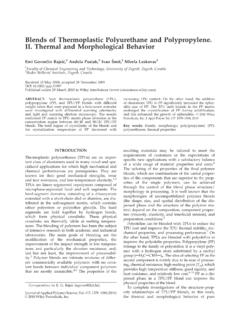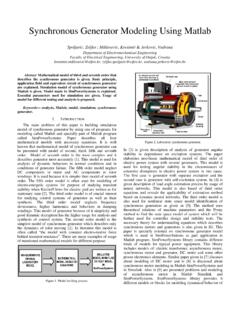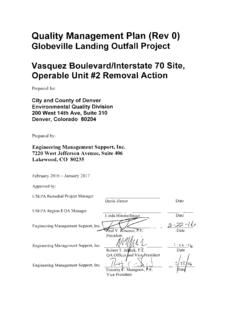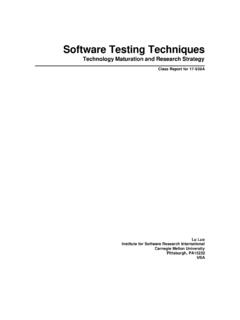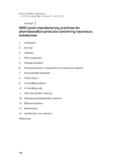Transcription of WHAT ARE THE KEY DIMENSIONS OF RESTAURANT SERVICE …
1 Electronic copy available at: Tourism: Socio-Cultural, Environmental and Economics Impact, pp. 235-249, 2011 S. Markovi , S. Raspor, J. Dor i : WHAT ARE THE KEY DIMENSIONS .. 235 WHAT ARE THE KEY DIMENSIONS OF RESTAURANT SERVICE quality ? AN EMPIRICAL STUDY IN THE CITY RESTAURANT SETTINGS Suzana Markovi Sanja Raspor Jelena Dor i UDC Received 15 March 2011 Revised 21 April 2011 3 May 2011 Abstract As customers are more exposed to different types of RESTAURANT settings, they developed a complex set of attributes for selecting a RESTAURANT for their excellent dining experience. The first competition, customers changing lifestyles and growing desires are features that shape RESTAURANT marketplace.
2 Thus, RESTAURANT managers should be prepared to meet these challenges. One approach in gaining competitive advantages and ensuring sustainable business performance is to focus on SERVICE quality . The main purpose of this study is to empirically investigate SERVICE quality in Croatian city RESTAURANT settings. The main goals are to assess RESTAURANT customers expectations and perceptions and to identify main DIMENSIONS of perceived and expected city RESTAURANT SERVICE quality . The data were collected using self-administered questionnaire. The questionnaire was designed in accordance with Stevens et al. (1995) and Andaleeb and Conway s (2006) research.
3 It contained seven aspects of RESTAURANT SERVICE , namely tangibles, reliability, responsiveness, assurance , empathy, price and satisfaction. The empirical research was conducted in March and April of 2010. Questionnaires were distributed in 31 RESTAURANT settings in city of Rijeka. In order to meet study goals, descriptive, bivariate (t-test) and multivariate (exploratory factor analysis and reliability analysis) statistical analyses were conducted. The sample contained both domestic and international RESTAURANT customers. The findings imply that for the majority of SERVICE attributes customers expectations scores are higher than their perceptions scores.
4 The study also identified five factors that best explained expected SERVICE quality and eight factors that best explained perceived SERVICE quality in the city restaurants. Keywords RESTAURANT SERVICE quality , SERVICE quality DIMENSIONS , SERVQUAL, DINESERV, Statistical analysis INTRODUCTION Developments in RESTAURANT industry and a complex set of factors that customer use for selecting a RESTAURANT have increased competitiveness among RESTAURANT settings. Providing high quality services and maintaining customers satisfaction are important factors leading to the business success. Thus, understanding RESTAURANT customers and heaving in mind the importance of SERVICE attributes are important criterions for gaining competitive advantages in RESTAURANT marketplace.
5 Electronic copy available at: Tourism: Socio-Cultural, Environmental and Economics Impact, pp. 235-249, 2011 S. Markovi , S. Raspor, J. Dor i : WHAT ARE THE KEY DIMENSIONS .. 236 The focus point of this study are DIMENSIONS that best explain expected and perceived RESTAURANT SERVICE quality . The paper provides a review of the literature regarding RESTAURANT SERVICE quality DIMENSIONS and includes results of the empirical research carried out on the sample of city restaurants in Croatia. 1. LITERATURE REVIEW The concept of SERVICE quality is usually defined on the basis of disconfirmation theory (Churchill and Surprenant 1982; Parasuraman et al.)
6 1985). According to this theory, customers evaluate SERVICE quality by comparing their expectations regarding particular SERVICE with actually delivered one. Basically, SERVICE quality means meeting or exceeding customer s expectations (Parasuraman et al. 1985.). When examining SERVICE quality , different DIMENSIONS ( SERVICE aspects) should be considered. Lehtinen and Lehtinen (1982) believed that SERVICE quality comprises three DIMENSIONS , namely physical quality , corporate quality and interactive quality . Gr nroos (1984) argued that SERVICE quality is made up of technical quality of the outcome, functional quality of the SERVICE encounter and corporate image.
7 Parasuraman et al. (1988) suggested five DIMENSIONS , named as tangibles, reliability, responsiveness, assurance and empathy. Parasuraman et al. (1988) revealed that reliability was the most important and empathy the least important dimension across wide array of SERVICE types. The importance of reliability dimension stated in different study contexts Zeithaml and Bitner (2000), Juwaheer and Ross (2003), as well as Jonsson Kvist and Klefsj (2006). However, Chowdhary and Prakash (2007) concluded that tangibles are more important for services with more tangible aspects ( restaurants), while reliability might be valued more with intangible nature of services.
8 Further, services targeted at the close communication with the customer require more assurance and empathy as compared to others. Apparently, there is no consensus regarding the number and the nature of SERVICE quality DIMENSIONS . However, authors agree that the concept is multidimensional and that importance of particular dimension varies across different SERVICE types. The RESTAURANT SERVICE quality is difficult to evaluate, because the assessments are made on both the SERVICE outcome and on the process of SERVICE delivery. Previous researches suggested that food quality , physical environment and SERVICE are the major components of overall RESTAURANT SERVICE quality (Dulen 1999; Susskind and Chan 2000; Ryu and Han 2010).
9 Among these attributes, food quality is the most important dimension of the RESTAURANT experience (Sulek and Hensley 2004). Although there is no consensus on the individual attributes that constitute food quality , the researchers focus on presentation, healthy options, taste, freshness and temperature (Namkung and Jang 2008). Similarly, Wu and Liang (2009) stated that SERVICE encounter in RESTAURANT settings consists of three main elements: environmental elements ( design, music, lighting), employees ( professional skills, reliability) and customers ( interaction with other customers). Electronic copy available at: Tourism: Socio-Cultural, Environmental and Economics Impact, pp.
10 235-249, 2011 S. Markovi , S. Raspor, J. Dor i : WHAT ARE THE KEY DIMENSIONS .. 237 When examining key SERVICE DIMENSIONS in RESTAURANT industry, authors report somewhat different results. Andaleeb and Conway (2006) reported a four-factor solution, interpreted as responsiveness, food quality , physical design and price. Kim et al. (2009) identified five factors, labeled as food quality , SERVICE quality , price and value, atmosphere and convenience. Markovi et al. (2010) revealed seven DIMENSIONS for expected SERVICE quality (cleanliness and appearance of facilities and staff, assurance , individual attention, satisfaction and loyalty, basic demands, responsiveness and reliability) and two DIMENSIONS for perceived SERVICE quality (overall dining experience and RESTAURANT ambience).


